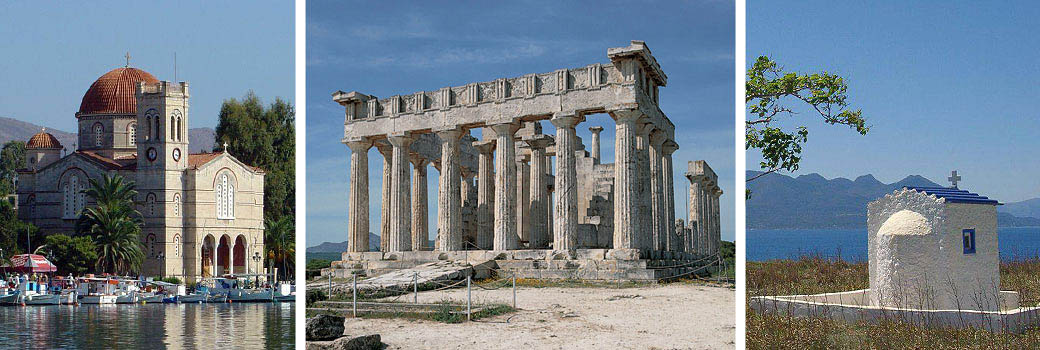
The island is named after Aegina, the most beautiful of the twenty daughters of Asopos, the river god, who eloped with Zeus to what was then a deserted island. Aegina was the mother of the hero Aeacus, who was born on the island and became its king.
There is historical evidence that the island was inhabited from as early as 3500 BC. During ancient times Aegina was a rival of Athens, the great sea power of the era. It was also briefly the first ‘capital’ of modern Greece from 1827 – 1829.
One of the most visited sites on Aegina is the church of Agios Nektarios. Agios Nektarios of Aegina (1846-1920), is one of the most widely known Greek Orthodox Saints. He was officially recognized as a saint by the Ecumenical Patriarchate of Constantinople in 1961.
Another popular landmark is the Temple of Aphaea, dedicated to its namesake, a goddess who was later associated with Athena; the temple is part of a pre-Christian, equilateral ‘holy triangle’ of temples that includes the Athenian Parthenon and the temple of Poseidon at Sounion.
The island is roughly triangular in shape, approximately 15 km from east to west and 10 km from north to south. Two thirds of Aegina consists of an extinct volcano.